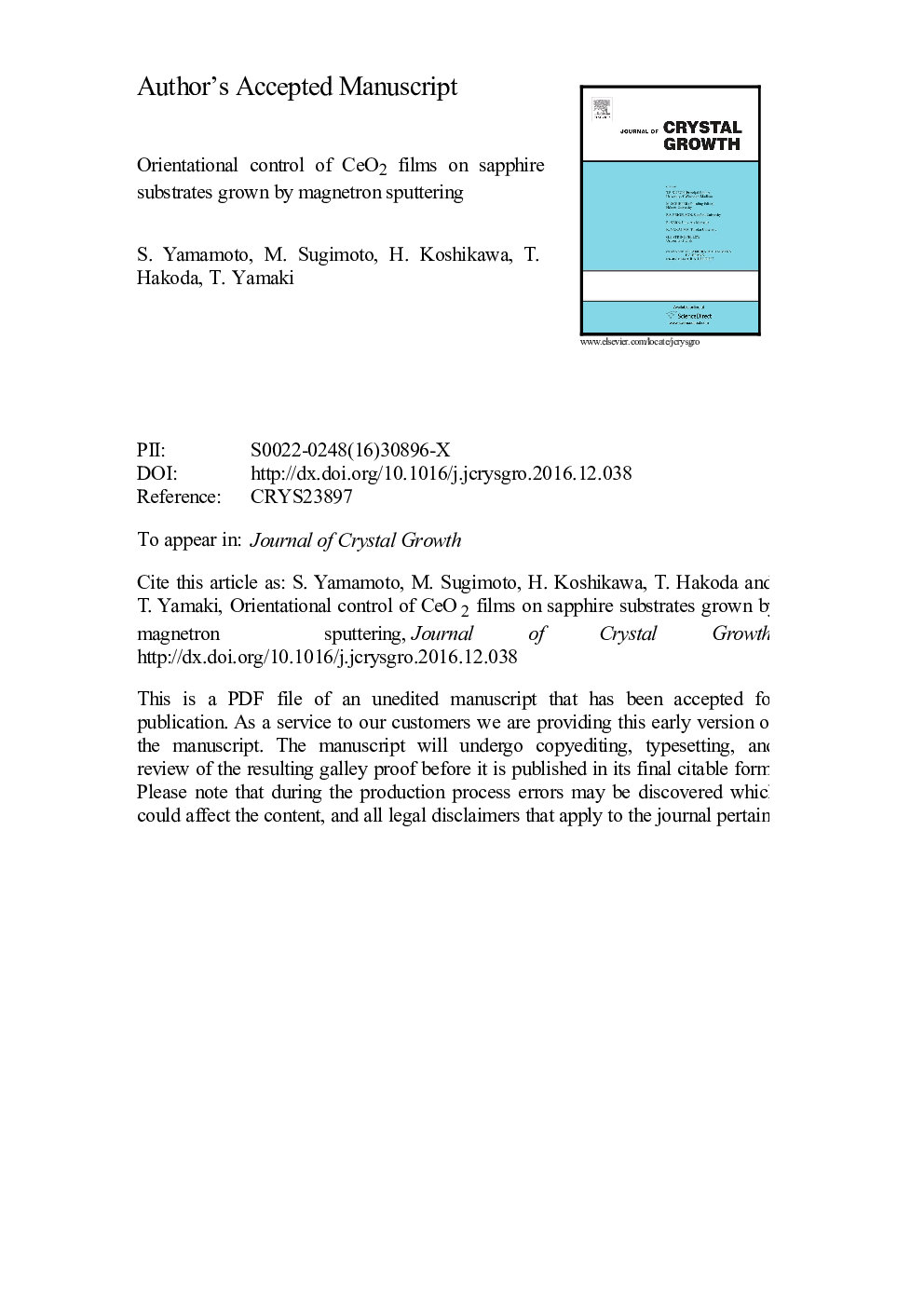| Article ID | Journal | Published Year | Pages | File Type |
|---|---|---|---|---|
| 5489576 | Journal of Crystal Growth | 2017 | 24 Pages |
Abstract
The effect of deposition temperature and post-annealing on the crystallographic orientation of cerium dioxide (CeO2) films on sapphire (α-Al2O3) substrates were investigated. CeO2 films, with thickness of 17 nm, were grown on c-plane and r-plane sapphire substrates by radiofrequency (rf) magnetron sputtering. Deposition temperatures between 150 and 500 °C were used with a sintered CeO2 target in an Ar-O2 gas mixture. The post-annealing treatment was performed in air at various temperatures ranging from 400 to 1000 °C. The films were characterized by X-ray diffraction, atomic force microscopy, and Rutherford backscattering spectroscopy. X-ray diffraction studies revealed that the orientation of the CeO2 films changed from (001) to mixed (001)/(111) and then to (111), with increasing deposition temperatures on both the c-plane and r-plane sapphire substrates. Post-annealing at 1000 °C improved the degree of crystallinity of the films, and formed rectangular grains. The results suggest that control of the deposition and post-annealing temperatures provides orientation-controlled CeO2 films on c- and r-plane sapphire substrates.
Keywords
Related Topics
Physical Sciences and Engineering
Physics and Astronomy
Condensed Matter Physics
Authors
S. Yamamoto, M. Sugimoto, H. Koshikawa, T. Hakoda, T. Yamaki,
